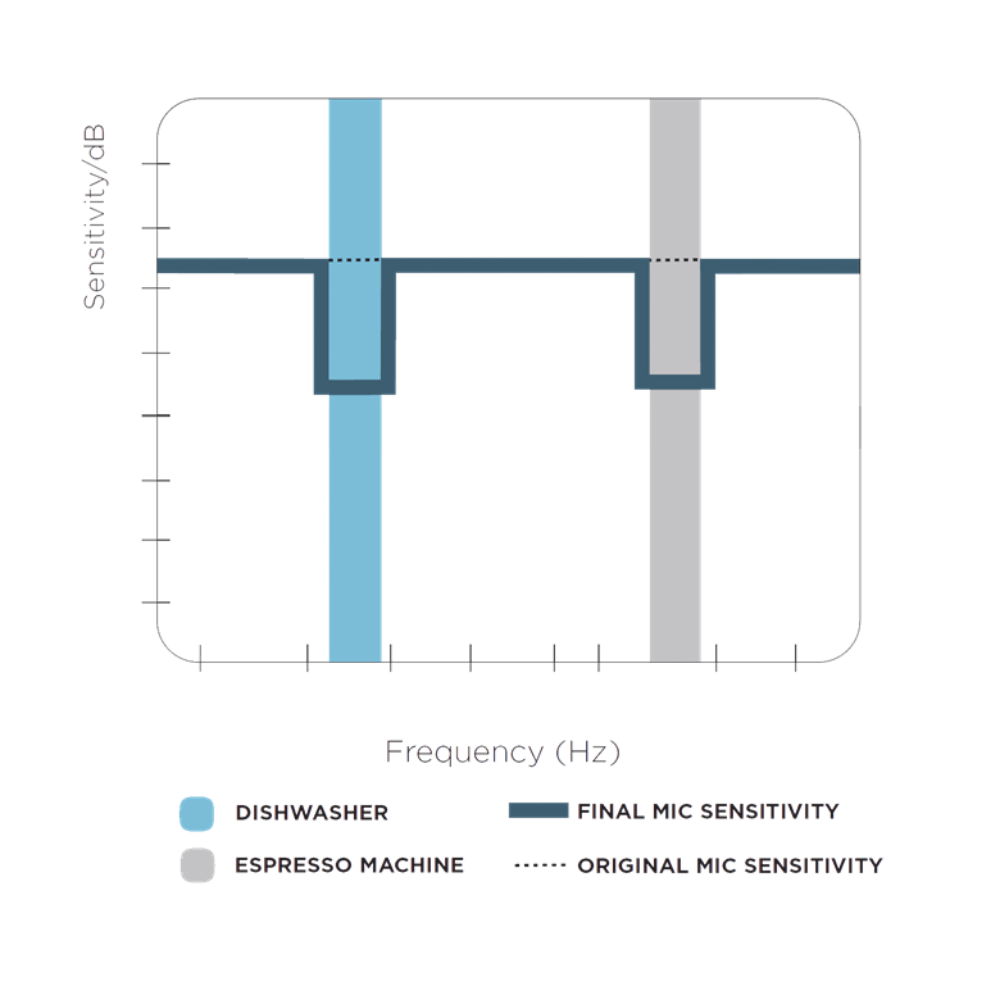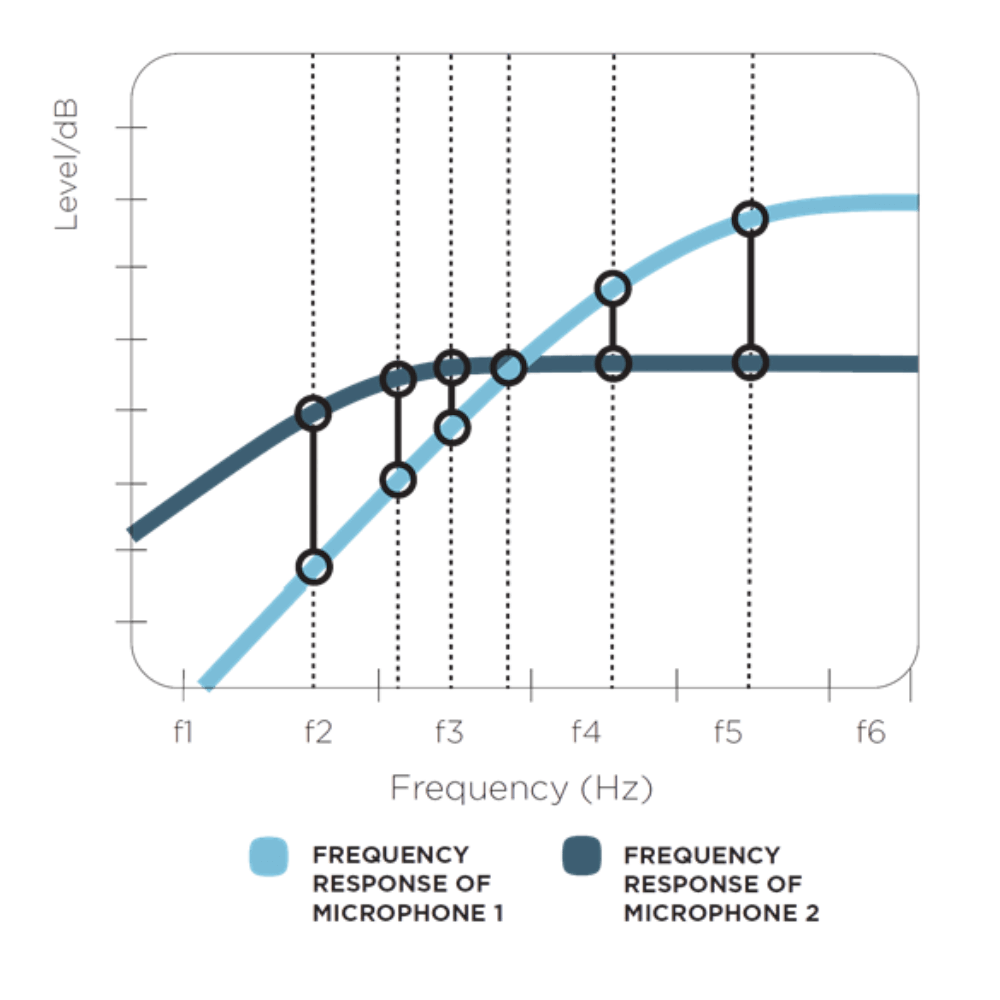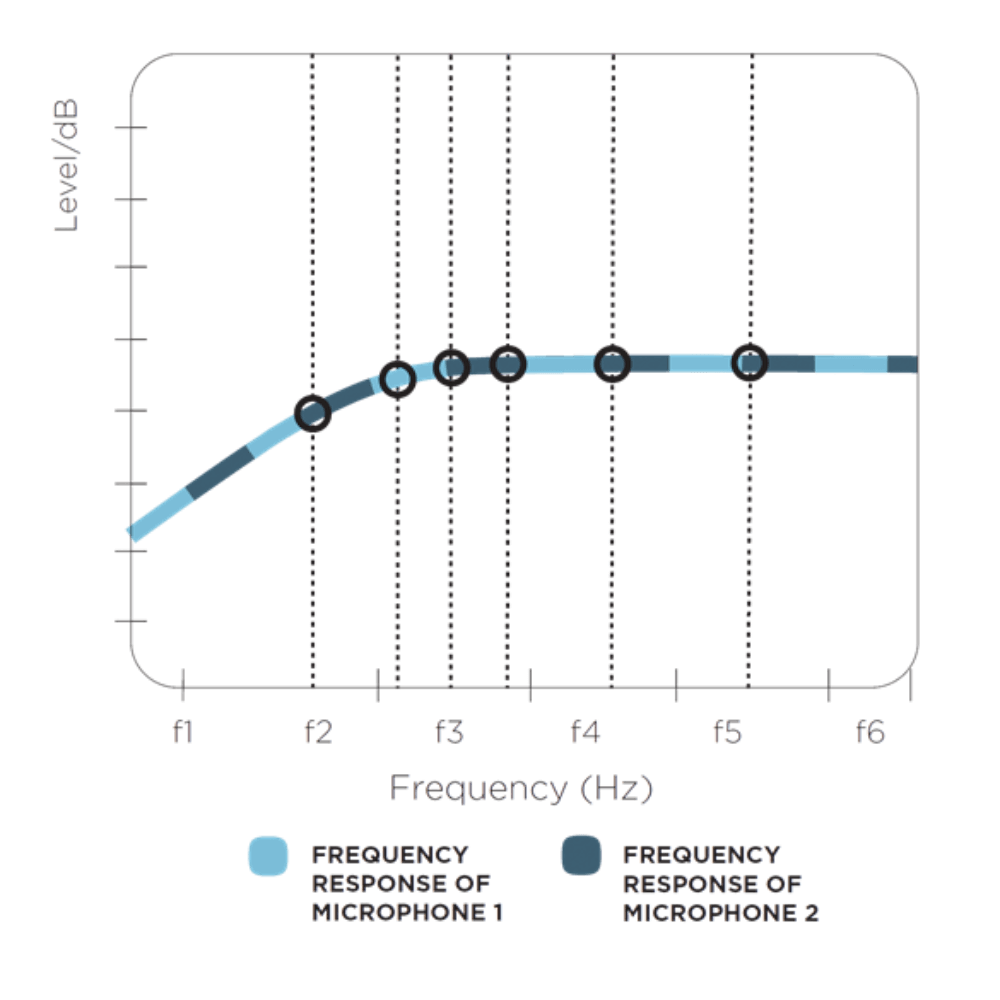People with hearing loss often have more difficulty understanding speech in noise than people with normal hearing. Therefore the ability of the hearing aids to reduce noise is of great importance to people with hearing loss.
Noise reduction can be achieved by means of noise reduction algorithms that reduce the noise in the sound signal while it is being processed by the hearing aid.
A second successful strategy involves reducing the amount of noise that is allowed to enter the hearing aid in the first place. This is what directional microphones are good at.
The directional microphone system found in Widex hearing aids, the HD Locator, consists of two omnidirectional microphones. The microphone system is adaptive, meaning that it will assume the polar pattern that produces the best signal-to-noise ratio in the current listening environment.


